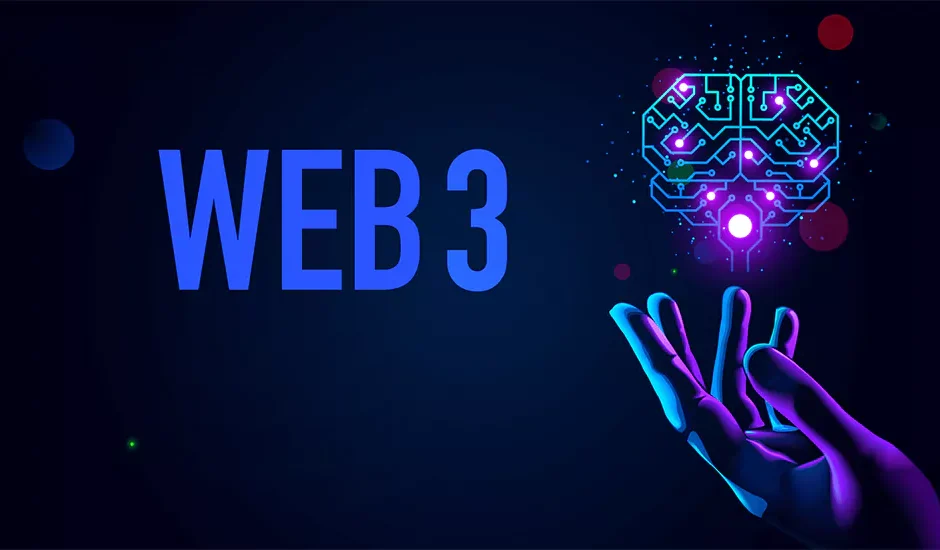The internet has evolved dramatically since its inception, transforming from a static information repository into an interactive and dynamic space that powers modern life. From the early days of Web1, characterized by read-only content, to the current Web2 era driven by user-generated content and centralized platforms, the digital landscape continues to evolve. Now, Web3—the next generation of the internet—is emerging, promising decentralization, enhanced privacy, and user ownership. However, while Web3 holds immense potential, it also faces significant challenges that must be addressed for widespread adoption.
The Promise of Web3
1. Decentralization and Ownership
One of the core principles of Web3 is decentralization. Unlike Web2, where a few tech giants control data and platforms, Web3 empowers users to own their digital identities and assets. Blockchain technology serves as the backbone of this decentralized architecture, enabling peer-to-peer interactions without intermediaries.
Key benefits include:
- Self-custody: Users maintain control of their digital wallets and data rather than relying on centralized service providers.
- Decentralized governance: Communities can participate in decision-making processes through Decentralized Autonomous Organizations (DAOs).
- Trustless interactions: Smart contracts, self-executing agreements written into code, remove the need for centralized authorities to facilitate transactions.
This shift promotes greater user empowerment and transparency across digital ecosystems.
2. Enhanced Privacy and Security
Web3 aims to address many of the privacy concerns associated with Web2, where user data is often collected, stored, and monetized without explicit consent. With Web3, users have greater control over their data and privacy.
Key privacy and security advancements include:
- Data ownership: Individuals can selectively share information instead of relinquishing it entirely to third parties.
- Encryption: Blockchain technology ensures secure transactions and communication.
- Reduced vulnerabilities: Decentralized networks are inherently less prone to single points of failure compared to centralized systems.
These privacy-centric features are particularly appealing in an era marked by frequent data breaches and concerns over mass surveillance.
3. Tokenized Economies
Tokenization is a transformative concept that enables digital and physical assets to be represented on the blockchain as tokens. Ethereum, the leading blockchain for smart contracts, has played a crucial role in driving this innovation.
Tokenized assets include:
- Cryptocurrencies: Digital currencies such as Bitcoin and Ether facilitate borderless payments.
- Non-Fungible Tokens (NFTs): Represent unique digital items, such as art and collectibles, that can be bought, sold, and traded.
- Security tokens: Offer investors shares in companies or real estate projects.
These developments create new revenue models and democratize access to financial markets.
4. DeFi and Financial Inclusion
Decentralized Finance (DeFi) is one of the most disruptive applications of Web3. It offers financial services such as lending, borrowing, and trading without relying on traditional financial intermediaries.
Key advantages include:
- Permissionless access: Anyone with an internet connection can participate in DeFi.
- Transparency: All transactions are recorded on the public blockchain.
- User control: Individuals maintain full custody of their assets.
By removing barriers to entry, DeFi is fostering greater financial inclusion, especially in regions underserved by traditional banking systems.
5. DAOs and Community Governance
Decentralized Autonomous Organizations (DAOs) represent a novel approach to organizational governance. Built on blockchain technology, DAOs enable members to pool resources and make decisions collectively.
Benefits include:
- Democratic decision-making: All members have a say in the governance process.
- Transparent operations: Voting and fund allocations are recorded on the blockchain.
- Global collaboration: Participants from around the world can contribute without geographical restrictions.
DAOs are redefining how organizations operate and allocate resources, paving the way for more equitable and transparent management structures.
Challenges Facing Web3
1. Scalability Issues
Current blockchain networks face significant scalability challenges. As the number of users and transactions grows, networks like Ethereum often experience congestion, resulting in slow transaction speeds and high fees.
Solutions to scalability issues include:
- Layer 2 technologies: Off-chain solutions such as Polygon reduce congestion on the main blockchain.
- Sharding: A method of dividing the blockchain into smaller, more manageable parts to increase throughput.
- Proof of Stake (PoS): Ethereum’s transition from Proof of Work (PoW) to PoS aims to improve scalability and energy efficiency.
2. User Experience Barriers
For mainstream adoption, Web3 must offer a user experience comparable to or better than Web2. Currently, interacting with blockchain applications can be complex and intimidating for non-technical users.
Challenges include:
- Managing digital wallets: Users must securely store seed phrases, which can be lost or compromised.
- Gas fees: Transaction fees can be unpredictable and costly.
- Onboarding complexity: Navigating dApps and DeFi platforms often requires technical knowledge.
Simplifying these processes and improving user interfaces will be critical to driving adoption.
3. Security Risks
While Web3 offers enhanced privacy and security, it is not immune to risks. Smart contract vulnerabilities and phishing attacks remain significant concerns.
Key risks include:
- Exploitable bugs: Poorly written smart contracts can lead to financial losses.
- Phishing scams: Unsuspecting users may fall victim to attacks that compromise their private keys.
- Rug pulls: Fraudulent projects can exit abruptly, leaving investors with losses.
Mitigating these risks requires robust security audits and user education.
4. Regulatory Uncertainty
The decentralized nature of Web3 poses challenges for regulatory authorities. Governments around the world are grappling with how to regulate digital assets, DeFi, and DAOs.
Key concerns include:
- Lack of clarity: Regulations vary widely across jurisdictions.
- Potential overregulation: Excessive controls could stifle innovation.
- Tax implications: Navigating tax obligations for digital assets remains complex.
Striking a balance between protecting consumers and fostering innovation will be crucial.
5. Energy Consumption Concerns
Blockchain networks, particularly those using Proof of Work (PoW), have faced criticism for their high energy consumption.
Steps to address these concerns include:
- Transition to PoS: Ethereum’s move to PoS reduces energy usage by up to 99%.
- Green blockchain initiatives: Projects are exploring renewable energy sources and carbon offset solutions.
Environmental sustainability remains a priority for the long-term viability of Web3.
The Path Forward for Web3
To unlock the full potential of Web3, stakeholders must collaborate and innovate to address its challenges.
Key priorities include:
- Improved scalability: Adoption of Layer 2 solutions and interoperability protocols.
- User experience enhancements: Developing intuitive interfaces and seamless onboarding processes.
- Robust security measures: Auditing smart contracts and educating users on best practices.
- Clear regulatory frameworks: Establishing balanced guidelines that protect consumers while fostering innovation.
As these issues are addressed, Web3 will become more accessible, secure, and sustainable.
Conclusion
Web3 represents a transformative shift in how we interact with the internet, offering a future where users regain control over their data, assets, and digital experiences. While challenges such as scalability, user experience, and regulatory uncertainty remain, the promise of a decentralized, transparent, and equitable digital ecosystem makes Web3 one of the most exciting developments in the evolution of the internet. With continued technological advancements and community-driven efforts, Web3 has the potential to redefine our digital lives and empower individuals like never before.
Noah Whatmore aregulatory and security expert writing about compliance, crypto fraud, and cybersecurity. Noah helps readers stay informed on risks and safeguards in the crypto ecosystem.


